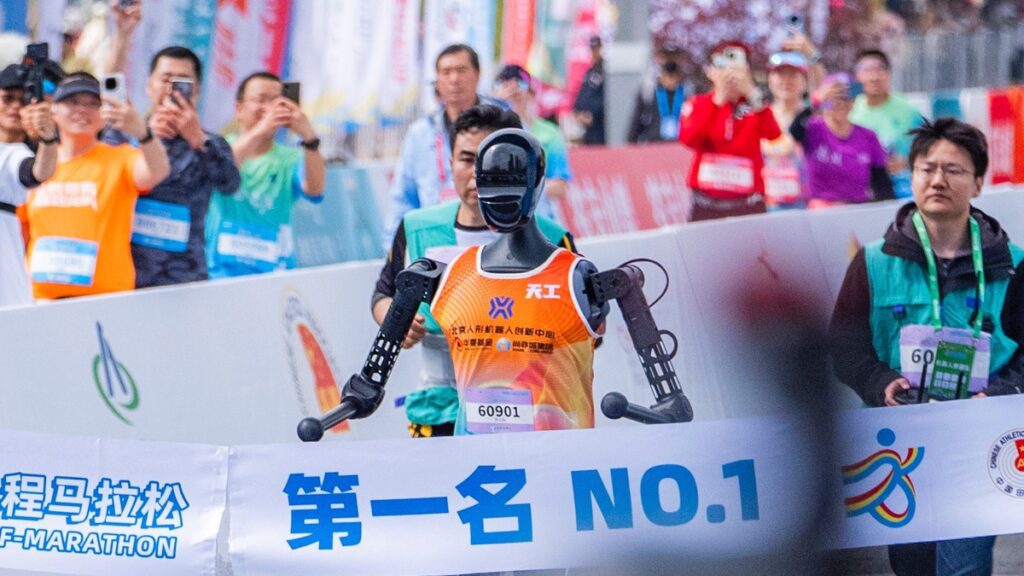The recent debut of the 2025 Beijing E-Town Half Marathon offers insights not only into the burgeoning intersection of technology and endurance sports but also into performance dynamics that seasoned trail and ultrarunners should consider as they prepare for future mountain races. The event, held on April 19, was particularly notable as it showcased the first competitive race between humanoid robots and human athletes, presenting a unique opportunity to analyze pacing strategies, race tactics, and technological reliability under pressure.
With nearly 12,000 human runners and 21 humanoid participants, the event faced a range of challenges, not only from the weather but also from the technological limitations exhibited by the robots. This race served as a demonstration of endurance and reliability—attributes critical to ultrarunning. The race was won by Ethiopian athletes, with finish times of 1:11:07 for the women and 1:02:36 for the men, highlighting the competitive standards that human athletes have achieved. Not to be overlooked, the humanoid robot Tiangong Ultra completed its run in a time of 2:40, making it the only robot to finish within the 3:10 cutoff for humans. However, this performance must be viewed through the lens of human physicality and endurance, as the robots’ finish times were markedly slower and their race experience was fraught with technological failures.
Throughout the marathon, we witnessed the importance of efficient energy management, as both humans and robots had to address hydration and fuel needs. Runners often stop at aid stations to replenish, while the humanoid competitors required battery replacements during the race—something that is reminiscent of the strategic planning ultrarunners must undertake, especially during long, rugged mountain races. The need for governance over one’s energy expenditure, whether through traditional fueling or effective use of electronic power, is a universal challenge in endurance racing.
The humanoid robots experienced significant hurdles not just in battery life but also mechanical reliability, with malfunctions leading to falls and battery depletion. The commentary during the race highlighted issues such as overheating joints in warmer conditions and power loss in cooler settings. These types of failures remind ultrarunners of the necessity for adaptable gear that can withstand variable mountain climates. The performance of Tiangong Ultra, which required three battery swaps, illustrates the hazards of over-reliance on technology without considering the practicalities of endurance racing. Runners must factor in what gear has proven reliable over long distances, rather than relying solely on the latest innovations.
Furthermore, the choice of robot size weighted into their performance metrics. Smaller robots were found to be more energy-efficient, although they struggled with stride length compared to their larger counterparts. This brings to mind considerations for ultrarunners who must choose gear and nutrition based on their weight-to-output ratio. For example, runners may benefit from gear that minimizes weight while maximizing comfort to enhance efficiency over long races. The findings also suggest the efficiency dynamics of gear and nutrition that can make or break race outcomes, especially when considering time lost to aid stops or gear adjustments.
Human competitors’ interactions with the robots during the marathon, often stopping to document the events, highlight another aspect to consider for ultrarunners. Engaging with other athletes and using tech, such as race trackers or social media for updates, is increasingly common. Yet, the primary focus remains on one’s own pacing strategy and the psychological demands of maintaining concentration over grueling distances or challenging terrain.
The race environment also showcased the effect of course conditions, as the humanoid robots encountered slick surfaces that complicated their movement. These conditions provide a clear parallel for trail and ultrarunners: terrain choice, weather impacts, and surface conditions can dramatically alter race outcomes. Therefore, training on varied terrains and simulating race conditions should be paramount in preparation for high-stakes races like the UTMB.
In essence, while the Beijing E-Town Half Marathon did not yield direct implications for ultrarunning strategy or race preparation, it highlighted the emerging technological interface within endurance sports, presenting both challenges and opportunities. Runners should be increasingly mindful of the evolving landscape of gear innovation, as well as the necessity for training that incorporates technology thoughtfully.
As ultrarunners prepare for their next races, particularly in mountainous terrain, it’s imperative to keep in mind the importance of efficiency not only in energy management but also in gear selection. Consider the reliability and performance of every piece of equipment, the adaptability required by differing race conditions, and the ever-present need for a robust strategy to mitigate risks associated with both physical and environmental challenges. Balancing these elements will be key in optimizing performance in future race environments, ensuring that runners can navigate not just the distances but also the uncertainties of ultrarunning’s demanding landscape.
